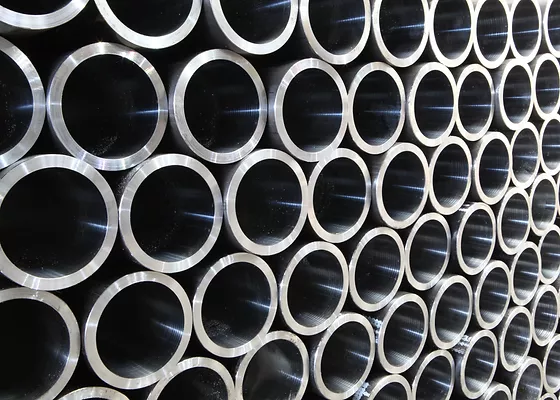The stainless steel tube in the passivation state will still have a certain reactivity, because its passivation film is always in a dynamic equilibrium state of dissolution, repair and passivation. When the environmental medium in which the stainless steel tube is located contains active anions, the equilibrium state is easily destroyed, and the dissolved state at this time is more dominant.
The reason for this is that active anions such as chloride ions are preferentially adsorbed on the passivation film on the surface of the stainless steel tube and crowd out the original oxygen atoms, and then combine with the cations in the passivation film to form soluble chlorides. , the result is that small etching pits will be formed on specific points of the newly exposed base metal. The diameter of such small etching pits is mainly about 20-30 μm. These small etching pits are called pitting nuclei, and can also be It is understood as the active center of etched hole formation. The presence of chloride ions will directly destroy the passive state of the surface of the stainless steel tube. Generally, the range of passivation zone on the surface of stainless steel pipe will decrease with the increase of chloride ion concentration.

In practical applications, when the anode potential in the environmental medium reaches a certain value, the current density will suddenly decrease, which indicates that a stable passivation film has begun to form on the surface of the stainless steel tube, and the corresponding resistance will be relatively high, and at a certain potential long-term in the region. However, with the increase of chloride ion concentration in the environmental medium, the critical current density will increase, the primary passivation potential will also increase, and the range of the passivation zone will be reduced. The explanation for this characteristic is that in the passivation potential region, chloride ions compete with oxidizing species and enter the film, thereby forming lattice defects and reducing the resistivity of oxides. Therefore, it is not easy to form passivation nor to maintain passivation in an environmental medium in the presence of chloride ions.
While the local passivation film of the stainless steel tube is destroyed, the rest of the protective film remains intact, which enables the conditions of pitting corrosion to be realized and strengthened. According to the electrochemical formation mechanism, the electrode potential of the activated stainless steel is much higher than that of the passive stainless steel, and the electrolyte solution reaches the thermodynamic conditions of electrochemical corrosion. The activated stainless steel becomes the anode, and the passive stainless steel acts as the cathode. Corrosion spots involve only a small part of the metal, the other surface will be a large cathodic area. In the electrochemical reaction, the cathodic reaction and the anodic reaction are carried out at the same speed, so the corrosion speed concentrated on the anodic corrosion point will be very fast, and the penetration effect is obvious, so that pitting corrosion will be generated.